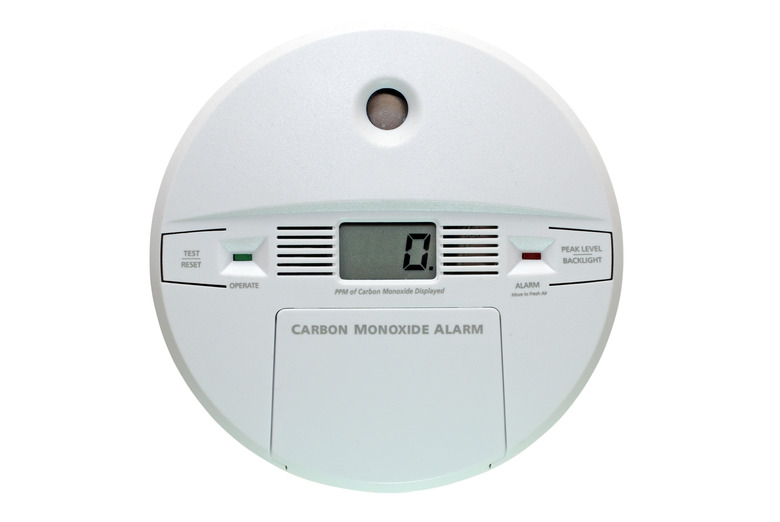How To Read Carbon Monoxide Detectors
We may receive a commission on purchases made from links.
Carbon monoxide detectors are a state-mandated requirement for many homes and a good practice for all homes. Unlike a smoke detector, you will very rarely, if ever, hear your carbon monoxide detector go off. This is a good thing because it means the levels of carbon monoxide in your home are safe. Understanding how to read carbon monoxide detectors can help give you ample warning before the alarm ever rings.
Measured in Millions
Measured in Millions
Like your dream bank account, carbon monoxide is measured in millions. Parts per million, or PPM, describes the diluted fluids of water or gas in the air in your home. Its measurement works like a percentage. The percentage is based on a scale of 100. If there were 1 percent of carbon monoxide gas in the air in your home, it would read as 10,000 parts per million. For comparison, 1 to 4 PPM is the normal level of carbon monoxide produced by the human body.
The Safe Numbers
The Safe Numbers
Federal regulations concerning carbon monoxide define exposure by hours and by PPM. The National Institute for Occupational Safety and Health (NIOSH) states that anything over eight hours of exposure at 35 PPM is dangerous. The U.S. Environmental Protection Agency (EPA) would require fire department personnel to wear breathing apparatuses after this level. Your alarm will go off if the PPM is between 30 and 40 for over eight hours. If you are concerned to see your detector reach 30 to 40 PPM, note the time. In an hour, the number may have dropped.
The Dangerous Numbers
The Dangerous Numbers
There are some numbers that should not be ignored. At 200 PPM, NIOSH recommends immediately leaving the home, opening all windows and turning off all appliances capable of carbon monoxide emissions. This is noted as the first listed level that healthy adults will experience physical symptoms from carbon monoxide. This includes nausea and headaches and is worse for children, the elderly or ill individuals. At this level, you should stay away from appliances, such as the water heater or unvented heaters, if they cannot be turned off and contact local authorities for help.
Higher levels increase symptoms. At 800 PPM, healthy adults will suffer from dizziness, nausea and convulsions from 45 minutes of exposure, and will not survive after an hour of exposure at this level. Leave the home immediately and call 911 if you experience these symptoms.
Really, Don’t Panic
Really, Don't Panic
Scary stuff, but there is a catch. Sometimes numbers can increase and drop due to circumstances. Smoking inside the home can cause carbon monoxide levels to increase. A smoker can increase the number reading on a carbon monoxide detector to 100 PPM within a short time frame. If numbers reach a dangerous level, your alarm will go off. That's what it's there for!
Alarm tones can reach a decibel level of 85 — loud enough to cause hearing damage if exposed for too long. You will hear your alarm go off, and you will be able to leave the premises safely. Be sure to test your carbon monoxide detector regularly and replace it every five years.
